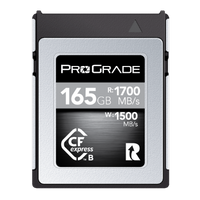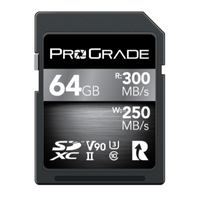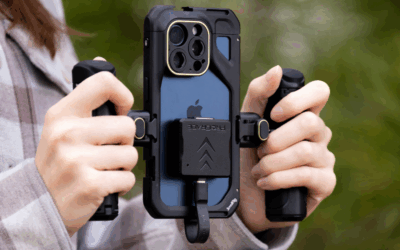As a photographer, you know the power of capturing a moment in time and creating lasting memories that your clients can cherish for years to come. But what if you could extend the reach of those memories even further? By blogging, you can do just that.
Blogging allows you to share your work with a broader audience and, in doing so, make connections and open up more business opportunities.
It can be daunting to start blogging if you don’t know where to begin. Still, with the right tips and tricks, blogging can be an incredibly rewarding experience that will help you connect with potential clients and establish yourself as an authority in the industry. So read on to find out why photographers need to blog, how to get started, and how to run a successful blog with minimal effort.
5 Benefits of Blogging: Why Photographers Need to Blog?
1. Growing Audience and Generating Income
Creating high-quality content and effectively utilizing SEO techniques can give you an edge by driving more potential customers to your website, thus providing more opportunities for income growth. Not just via generating more bookings. A well-maintained blog can help open up whole new income streams, from selling your images and photography lessons to advertising and affiliate partnerships.
2. Building Credibility and Trustworthiness
By providing potential clients with in-depth information about photography, blogging can help you build trust and credibility amongst your peers and prospective customers alike. You can showcase your work and expertise in specific areas of photography to land gigs in desired fields. In addition, showing potential clients that you are a reliable, and a knowledgeable photographer usually allows you to charge more for the same work.
3. Personal Growth and Professional Development
Blogging can be an invaluable part of any photographer’s marketing and growth strategy. But blogging also provides an outlet for expressing yourself and sharing your thoughts and feelings with the world. You get to explore ideas, concepts, and emotions that are both meaningful and inspirational. You can also learn more about photography and yourself by developing your thoughts into words that others can relate to.
4. Establish and Strengthen Relationships With Clients
Blogging provides a wonderful way to connect with people with similar experiences or perspectives. In addition, you can build and nurture relationships by sharing behind-the-scenes insights, tips, and techniques that can help potential clients better understand what it takes to produce great photography.
5. Creating Opportunities for Collaboration and Networking
By engaging in conversation through blog posts, comments, and interactions on social media platforms, you can build meaningful relationships that may lead to new opportunities.
How to Get Started With Blogging as a Photographer?
Start With a Clear Goal
A blog can help you establish yourself as a thought leader and cultivate relationships with your audience. But it can also be a straightforward marketing tool and used to drive more traffic to your website. You can even turn your blog into a revenue stream.
It is vital to clearly define what you want to get out of your blog because, based on your goal, the content you put up will inevitably vary.
If your goal is to nurture and build a stronger connection with your established audience, you should use your blog to take the readers behind the scenes of your shoots or put out content filled with personal stories. Then again, if you’re seeking to build a revenue stream or drive traffic, you should focus more on posting tutorials and how-to guides. And so on.
Designing your blog with an initial goal in mind will help you direct your content creation and ensure that you are consistently producing articles that are relevant to your audience. It will also enable you to measure and analyze the success of your blog over time.
Side note: Your blog can have many objectives, but the narrower the focus, the better. It gives your readers an idea of what they can expect and keeps them engaged in the topics they are interested in. Additionally, the wider the focus, the more time-consuming writing becomes. Having a blog with three different goals is like running three different blogs.
Another thing to consider when setting goals is whether your blog is going to be personal: about you, or thematic: about a subject.
Define Your Target Audience
As a photography blogger, it is essential to understand and define your target audience to reach the right readers and grow your blog. Knowing who your target audience is will help you craft content that resonates with them, select visuals that they’ll appreciate, use language that they’ll understand, and communicate with them in a way that will foster ongoing engagement.
To define your target audience, start by asking who you would like to reach out to – what age range or demographics do they have? What are their interests or hobbies? What type of content would resonate with them?
Once you have an idea of your target audience, consider using various analytics tools and social media platforms to better understand who are your potential followers, what kind of language they use, and what they truly need. That way, you can tailor content for them.
Choose a Platform that is Right for Your Needs
Once you have outlined your goals and needs, including who your audience is and what features you need, it is time to choose a blogging platform. Each platform has its benefits and trade-offs.
For example, WordPress has many features that allow for customization and might be the best for targeting a professional audience. But, at the same time, you need to be more SEO savvy and build your audience from scratch.
Platforms like Blogger, Tumblr, or Medium already have a lot of users, so getting noticed and gaining followers is a lot easier. Think of these platforms as Twitter or Instagram. Writers you like are easy to follow, and the articles you enjoy are effortless to share. So great content spreads faster and has the potential to go viral. Then again, your content drives traffic to those platforms rather than directly to your website. That’s why some writers treat blogging platforms more like social media channels and use them for mirroring blog posts on their websites.
The bottom line is that there is no right or wrong approach. Research the available options and compare them to see which fits your needs best. Most importantly, ensure that the outlet meets your goals and expectations and start publishing. You’ll learn as you go and can adjust accordingly.
Craft Quality Content that Resonates with Your Audience
Successful blogs have one thing in common – they always put the reader first. Your goal is not to satisfy Google algorithms.
To make a lasting impression on your audience, crafting quality content for your photography blog is essential. Quality content should be creative and inspiring while also engaging and informative. Creating content that resonates with your audience builds an authentic connection and trust, resulting in increased readers and followers.
Quality content doesn’t have to be overly complicated or time-consuming either—it can be built around a stunning photograph, or it can be something as simple as an interesting story related to your photography adventures.
Here are 13 tips on how to pique your audience’s interest and keep them coming back for more:
1. Be consistent: Block time in your weekly schedule to commit to blogging regularly.
2. Brainstorm creative and unique topics: The more interesting and relevant a topic is to your target audience, the more likely they will engage.
3. Outline your article: Do research and outline your post. That helps to ensure you stay on topic and achieve your goals for the given article.
4. Craft catchy headlines: Write an attention-grabbing headline that accurately reflects the post’s content.
5. Start with an attention-grabbing introduction: Your introduction should be captivating and exciting, as it sets the tone for the rest of your post. Incorporate personal stories, anecdotes, or thought-provoking questions to pull readers in from the beginning. Also, lay out clear benefits readers get when they read your post.
6. Keep it concise: Long-winded blog posts can be difficult to follow and lose the reader’s attention quickly, so keep it brief but informative.
7. Include attractive images and visuals: It goes without saying that a photography blog needs to contain captivating photos. But consider other kinds of visuals (like graphs, charts, etc.) as well. Visuals make your posts more appealing and make a complex topic easier to understand.
8. Write in a conversational style: Rather than overly formal or stiff, write your blog post as if speaking directly to your readers in a casual conversation. Use “you” in your writing as often as possible.
9. Keep your post organized and easy to read: Break up large chunks of text with subheadings and lists.
10. Include a call-to-action: Call-to-actions get readers engaged and involved with the content of your blog post (e.g., leave a comment, share on social media, etc.). For example, inviting readers to write comments encourages them to engage with the content. These tiny engagements here and there are precisely what help build relationships over time.
11. Create value: Don’t sell. At least don’t oversell. Also, don’t be afraid to link to outside sources, even competitors’ blog posts. Including relevant links throughout the post provides additional resources for interested readers to explore further. You’ll come off as a kind and transparent blogger as a result.
12. Incorporate keywords into posts: Use SEO tools for researching and incorporating keywords into your articles. Proper keyword research helps you create content that will stand out from the crowd. These tools also allow you to analyze your posts’ performance and track progress.
13. Promote your content strategically: Once done writing and publishing, promote posts through social media channels. That helps to increase reach, engagement, and followers! Do that even when you blog on blogging platforms like Medium or Blogger.
To Sum Up
Whether you’re just starting out or are already an established photographer, blogging is one of the most effective ways to make a name for yourself in the industry.
Blogging is not only essential for getting noticed, building relationships with potential clients, and boosting your visibility in the photography world. It also allows you to stand out from the crowd, attract more work in a specific niche, and make a lasting impression on your fans and followers. So why not give it a try? You never know what amazing opportunities might come as a result!
We at ProGrade Digital manufacture high-speed memory cards and workflow readers to speed up your photography workflow and save you valuable time. The time you can use, perhaps, for blogging.





